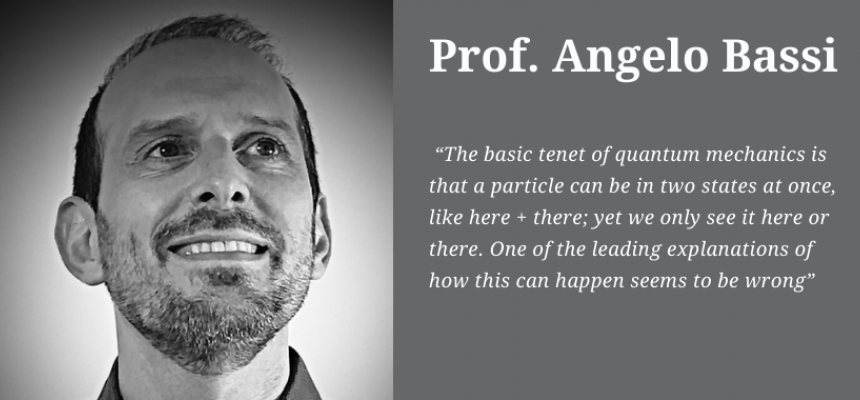Excellent news for the research at the University: the paper "Underground test of gravity-related wave function collapse", written by a team of researchers led by the University of Trieste and published in Nature Physics, was indicated by Science as the second most important scientific news of 2020.
The studies described in the paper present the results of tests made to verify quantum wave function collapse model proposed by Nobel Prize winner Sir Roger Penrose.
The experimental measurements, carried out with an ultra-pure germanium detector, took place in the INFN Gran Sasso National Laboratories, while the University of Trieste’s worked on the predictions of the theoretical model in comparison with experimental data.
Angelo Bassi, Professor at the Department of Physics of the University of Trieste and worldwide leading scientist in the field of the foundations of quantum mechanics, coordinated the international team that worked on the research cited by Science.
Five questions to Angelo Bassi
1. Professor Bassi: Congratulations! Did you expect this acknowledgement?
Honestly not. Publishing the research in Nature Physics was already a wonderful result. The article came out in early September and immediately got sensational on the social media. It has already been accessed over 4500 times and its results have been reported on the most important scientific websites. But I honestly never thought Science would award to us the second place among the most important scientific news of the year. And the ranking concerns all science, not just physics.
2. Last year the New York Times called you "The rebel physicist". How did you earn this name and the attention of the newspaper?
The name is due to the fact that in my scientific career I have devoted myself with perseverance to the study of the foundations of quantum mechanics and I am trying to go beyond that. It is a brave choice because it is way upstream, as it challenges quantum mechanics itself. But I've never had any doubt about it. Getting to the New York Times is the result of twenty years of work. This work has been now rewarded with the leadership of important international research projects, which have given a lot of visibility, together with the related responsibilities.
3. The feeling in that quantum mechanics is getting much attention lately. What do you think is the reason for that?
I think there are two reasons. On one hand, quantum mechanics claims to explain, physically, what the world is like, and understanding the world around us is a need that everyone has, not just scientists. The second reason is that quantum mechanics is an elusive theory, mysterious in some ways and not yet fully understood, and this makes it even more fascinating.
4. You are one of the editors of the book "Do Wave Functions Jump? Perspectives of the Work of GianCarlo Ghirardi", that commemorates Professor GianCarlo Ghirardi. What are your memories about him?
GianCarlo Ghirardi was my first mentor. I learned from him all the "secrets" of quantum mechanics. He was the one who instilled in me the passion for its foundations. He has trained generations of students who remember him for his unquestioned scientific depth, enthusiasm in research, passion for teaching. And he was one of the most important Italian scientists at international level: an honor and a pride at the same time for the University of Trieste and the city.
5. You come from a small town in the Udine province and now you have an international career: how did you start and how did you cultivate your interest for physics?
Since a young age I had a passion for studying, especially physics and mathematics. Attending university after high school (not an obvious choice back in those days) has been natural for me. I chose physics because it allowed me to cultivate the passion for study and I immediately became interested in its foundations to understand the reason of things. Then it was a matter of perseverance, determination, a lot of study and a lot of work: all essential elements that allowed me to build over time a research path that is being successful.




